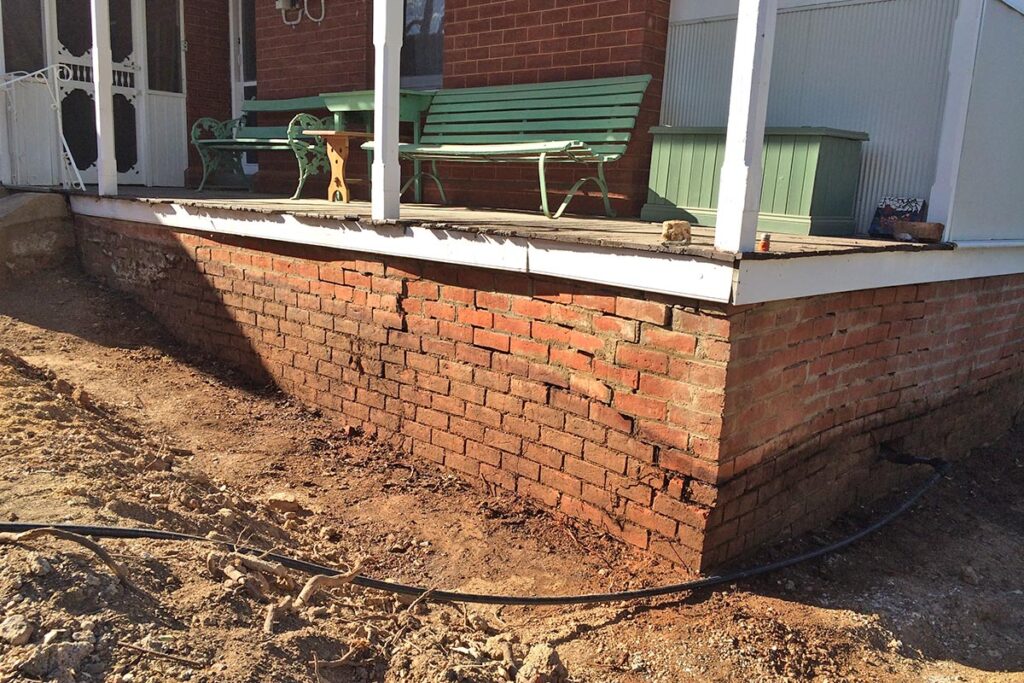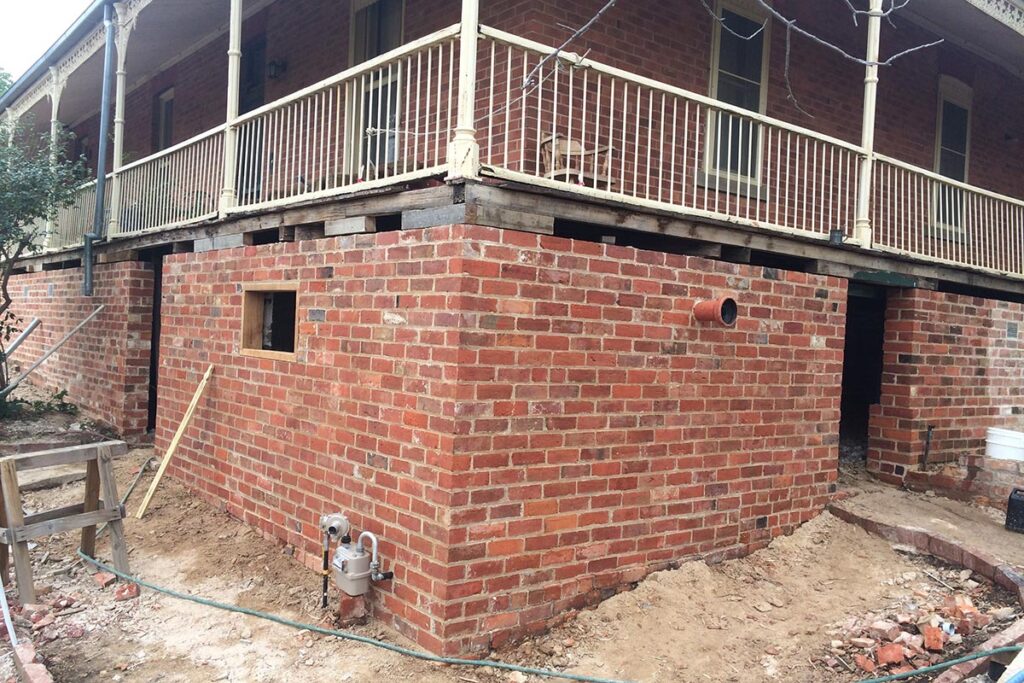Repointing and Cement Mortar Removal
The vast majority of buildings constructed before 1900 are built using lime mortar, and this must be used to replace any fretted brickwork or mortar. Lime mortar is permeable and flexible, allowing the building to breathe and maintain its structural integrity through all of the seasons. Lime mortar allows the soft and porous bricks to easily release stored moisture in less humid weather.
Quite often, cement mortars are introduced to replace fretted lime mortar by well meaning trades & home owners – however cement mortar is rigid and waterproof, sealing moisture in and pushing it further up the wall by capillary action. As the brick wall is trying to release the moisture trapped, the combination of cement mortar and softer bricks containing groundwater salts and minerals (deposited in the brickwork pores over hundreds of years), the brick’s fire coat pops off, creating the familiar red/orange brick dust found at the base of walls as the wall is trying to protect itself.
When contemporary materials such as acrylic/enamel paints or cement coatings/mortars are introduced, or when drainage is compromised, these problems occur. However, if the building is restored to operate as it was designed, these problems will be minimised.
Cement mortar removal can be relatively easy, pending how hard the mortar is. If it has a high cement content, the removal methodology is more labour intensive, but is certainly achievable. The mortar is removed & then repointed in lime mortar to traditional ratios with matched jointing, restoring the brickwork’s equilibrium through the changing humidity levels from summer to winter.


